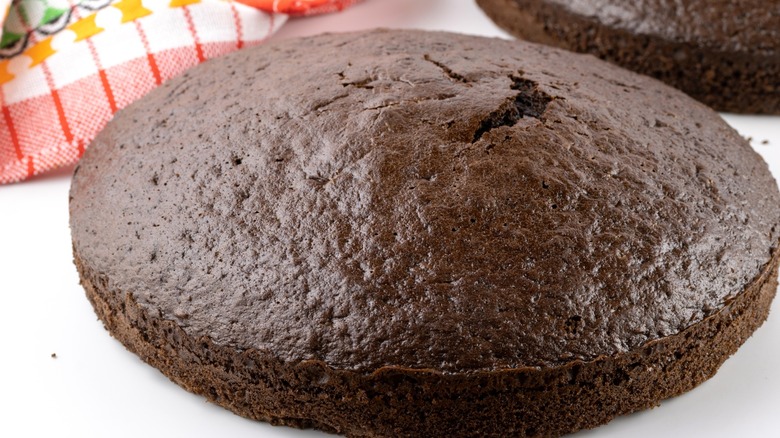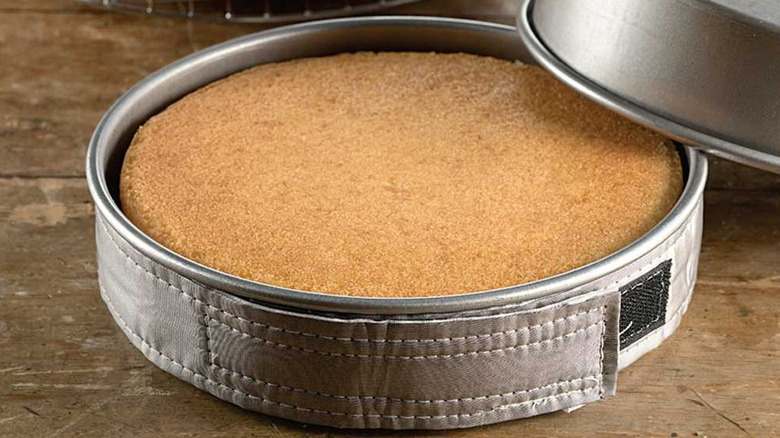The Cake Baking Tool That Promises Soft Edges — But Is It Worth It?
Baking a cake is just as much about getting the flavor right as it is about achieving the perfect texture. Some people argue that boiling the cake batter before baking it gets the best results, while others focus more on using special tools throughout the process. One such tool is a cake strip, which is supposed to prevent the edges of your confection from getting too crispy in the oven. However, according to Vivian Villa, the chef and founder of Unbutter plant-based butters, buying one in the hope it will keep the outside of your next fruity chocolate cake soft isn't worth it.
Villa began her justification for being averse to using cake strips by explaining how they work. "Strips work by insulating the outside part of the cake that's in direct contact with the pan, which helps with even heat distribution throughout the cake during the baking process," Villa told The Takeout. She didn't make the case that they don't function properly, just that they aren't entirely necessary. "I find strips to be tedious and not worth the effort," said Villa. That makes perfect sense, given that Villa has her own method of performing the same task that doesn't require purchasing any special tool.
Cost-free ways to get soft cake edges
While cake strips aren't terribly expensive, nothing beats free, and Vivian Villa shared some tricks she has up her sleeve that do the same job for zero cost to you. The first is so simple that it makes you wonder how cake strips sell at all. "A cake pan placed in a water bath performs the same task," Villa said. Okay, technically, people pay a water bill, so this isn't entirely free. Yet, it's a fraction of the cost of purchasing a special tool.
Another technique Villa suggested to avoid wasting money on cake strips utilizes two items nearly every home baker has lying around the kitchen. "Alternatively, placing a tea towel over the cake with a pan on top wicks moisture away as the pan traps the heat underneath," she said. It's easy to be goaded into buying kitchen tools that aren't worth the money when the companies selling them make a strong case that they — and only they — can solve a problem you're having with getting a recipe to come out just right. But all too often, a little critical thinking goes a long way, and sometimes a cheaper solution is staring you in the face.

